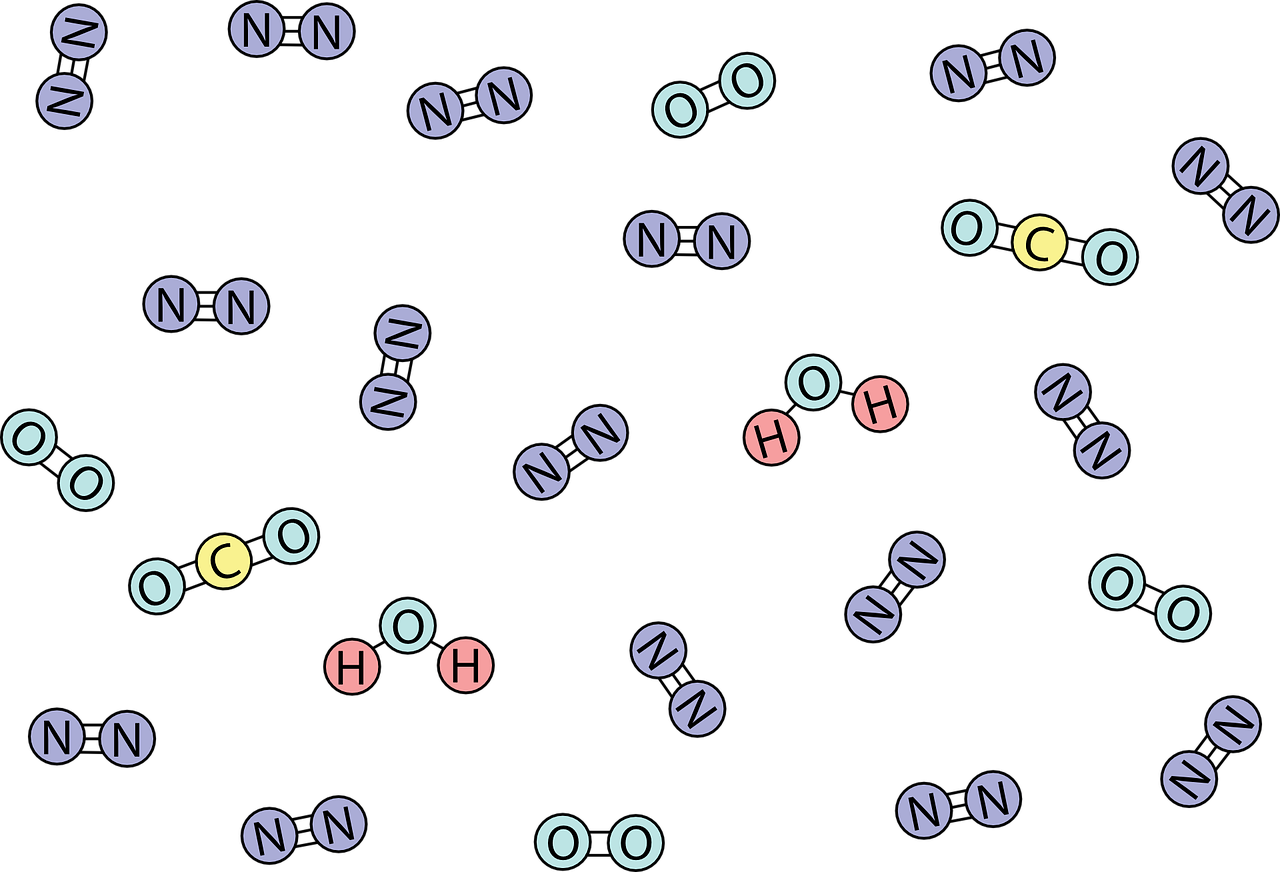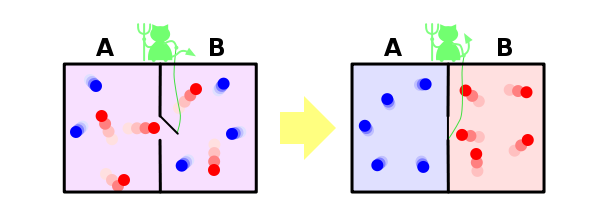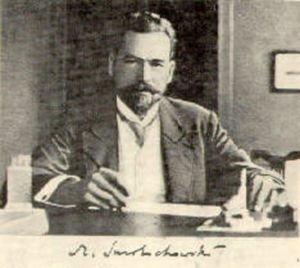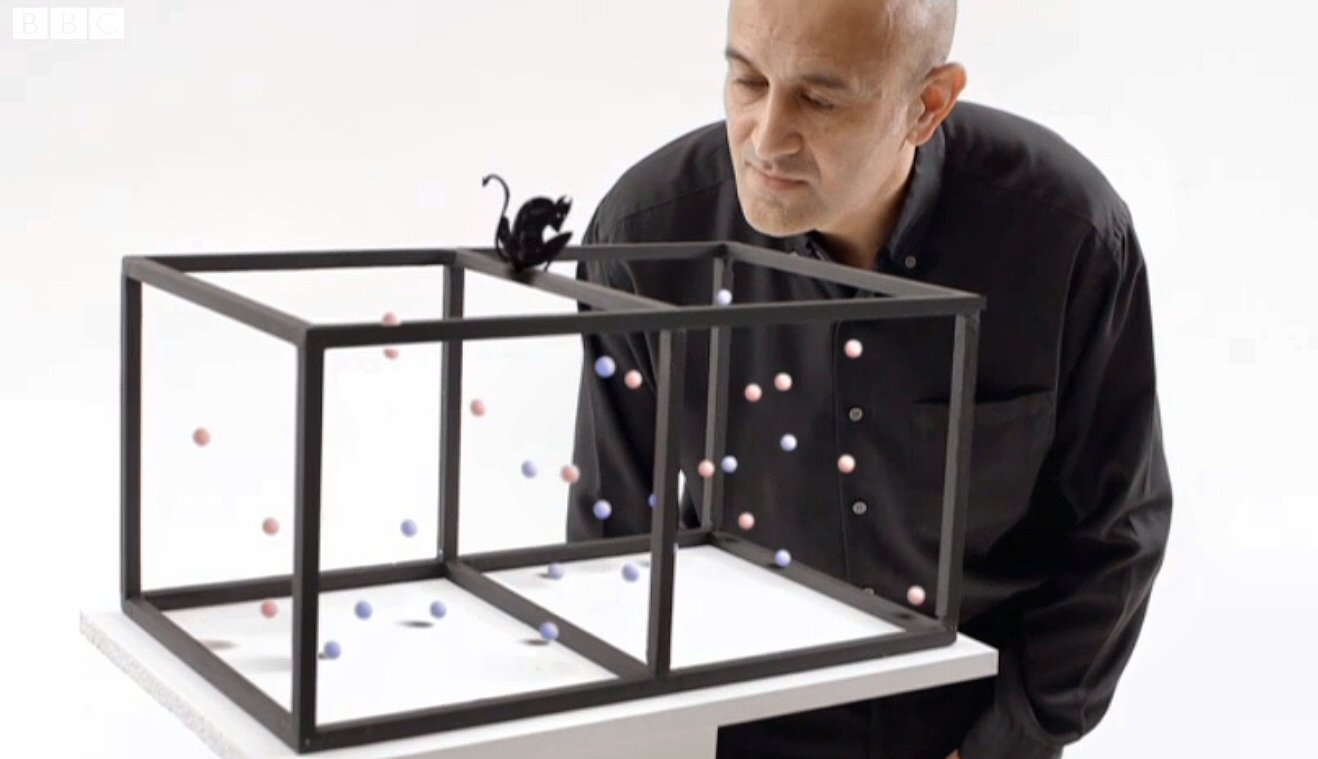Part 7: Maxwell's Impossible Demon

Impossible Science #1, #2,#3,#4,#5,#6,#7
James Clerk Maxwell, in 1867, introduced a famous thought experiment involving what he called a “demon”.
Maxwell's demon was a tiny imaginary being who, by observing and rearranging huge numbers of molecules, could reduce the entropy of any system. Could Maxwell’s demon if it really existed overthrow the second law of thermodynamics? Many experts and amateurs have proposed potential ways of creating such a demon. However much like perpetual motion devices, all of them proved to be impossible.
Atoms in Gas

pixabay
In the 1800's, physicists came to realize that matter is made of atoms and molecules. This helped to explain many aspects of thermodynamics. Atoms in a gas are in ceaseless rapid motion in all directions, and heat is the kinetic energy of this random motion.
Statistically not Physically Impossible

According to James Clerk Maxwell, nothing prevents the molecules in a container of gas from simultaneously moving in one direction. This spontaneous decrease in entropy would seem to go against the second law. Maxwell said the second law of thermodynamics is really a statistical law, its violation a statistical, not a physical, impossibility.
Maxwell’s demon

wikipedia
He proposed a tiny being that can observe and manipulate individual molecules. The demon is stationed at a small opening between 2 chambers of gas, operating a door. When a molecule approaches from one side, the demon opens the door. When a molecule approaches from the other side, the demon keeps the door closed. Since molecules can only pass one way through the opening, eventually, all the molecules are located on one side, lowering the entropy of the system and violating the 2nd law.
Something for nothing
Maxwell’s demon, by decreasing entropy, could be used to make a perpetual motion machine. By re-expanding the gas, the demon can do work while reducing the temperature of the gas. The net apparent result is that heat has been extracted from the gas and turned into useful work.
Re-designing the demon

wikipedia
For more than a hundred years, scientists struggled with the problem of Maxwell’s demon. Marian Smoluchowski replaced the demon with a small, spring loaded trap door. Collisions with the molecules would transfer energy to the door, making it bounce open and closed at random. The trapdoor could not work like the demon.
Understanding the problem

pixabay
Rolf Landauer and Charles Bennett finally reduced Maxwell’s demon to its core components. The demon is a device for obtaining and using information. As the demon operates, it accumulates trillions of trillions of bits of useless information. To continue to operate, the demon must erase its memory. Landauer proved; any process that erases information must be accompanied by waste heat. The entropy produced by this waste heat the cost of information erasure offsets any reduction of entropy created by the demon. The cost of erasure saves the second law.
Entropy is information
![]()
wikipedia
Maxwell’s demon gives us new insight into the meaning of entropy. Entropy is information. The entropy of a system is the amount of information that we lack about its detailed microscopic state. The entropy of a gas is greater if the gas has more energy or occupies a larger volume. Entropy can also be viewed as a measure of disorder the more orderly a system, the less information we lack. The information acquired by the demon is also a type of entropy.
Final Thoughts
The modern concept of information was only recently developed by Claude Shannon in the late 1940s to describe the mathematics of communication. Although it was invented for technological applications, it turns out to be a fundamental idea in science.
Maxwell's Demon NEWS:
Physics First: Scientists Create Maxwell’s Demon In Photonic Circuit
Impossible Science
#1 - THREE TYPES OF IMPOSSIBLE,
#2 - ALMOST IMPOSSIBLE,
#3 - ABSOLUTE ZERO IMPOSSIBLE,
#4 - IMPOSSIBLE PERPETUAL MOTION,
#5 - CHAOS MAKES PREDICTING THE FUTURE IMPOSSIBLE,
#6 - IMPOSSIBLE TIME TRAVEL,
#7 - MAXWELL'S IMPOSSIBLE DEMON

